Breitling Chronomat Review and Complete Buying Guide
The Breitling Chronomat is a watch that has withstood the test of time. This watch was worn in World War II, withstood the quartz crisis, was reinvented during the 1980s after the company went under, and today is recognized as one of the brand's most popular and beloved watches. Although the Breitling Chronomat has appeared in countless different incarnations since it’s a relaunch nearly forty years ago, the collection as a whole a has managed to retain its core identity throughout the various generations, and it offers a level or recognizability within the luxury watch industry that few timepieces can match.
While you will find the Chronomat name attached to a startlingly wide variety of different models, all of them are United by their distinct bezels that are fitted with the model’s signature "rider tabs" at their poles. In its modern form, Breitling has designed the Chronomat to be the ultimate all-purpose sports watch with a sophisticated style and a wide range of different configurations. Additionally, while the current-production Breitling Chronomat is an unmistakably modern luxury timepiece, it incorporates a number of different individual design elements that recall fan-favorite models from the Chronomat's rich history.
Although the Chronomat collection is one of the cornerstone offerings of Breitling watches, it has seen various looks and configurations over the years as it transitioned from a tool watch for scientists to a professional pilot's watch, becoming one of the most famous Breitling models of all time.
Breitling Chronomat Fast Facts
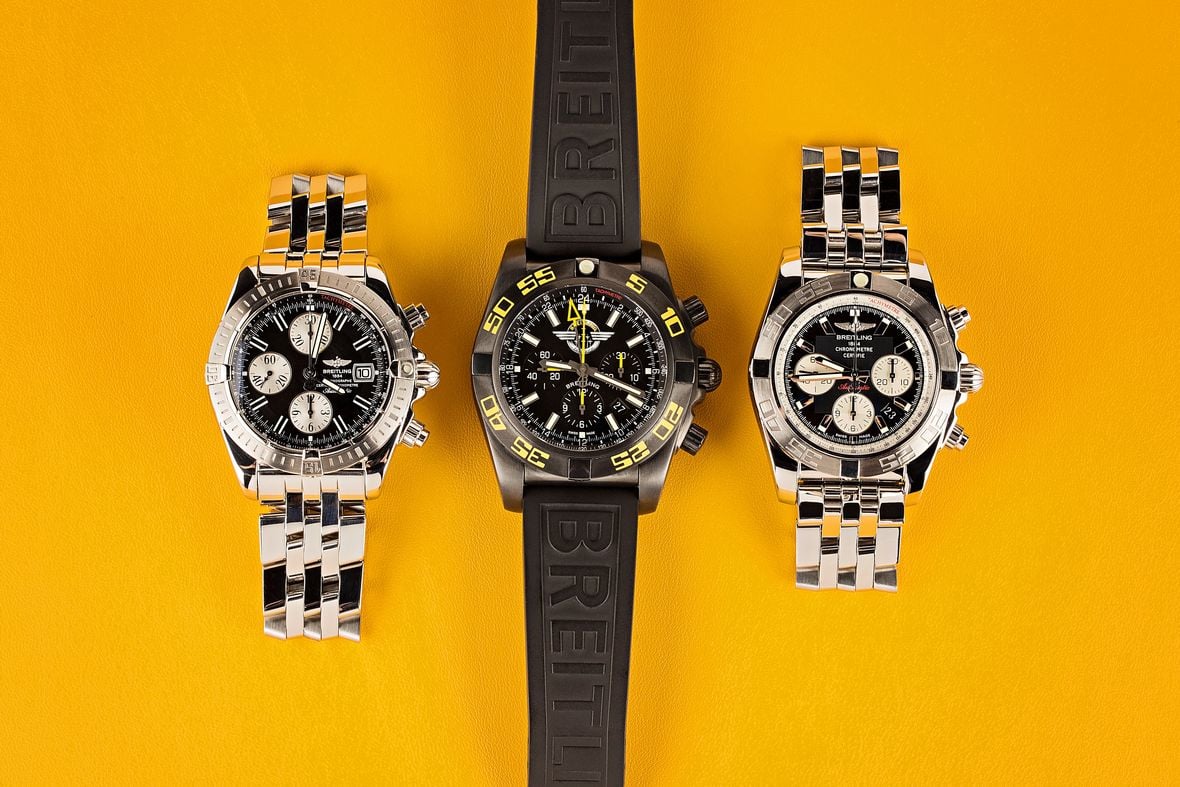
About the Breitling Chronomat Collection:
- The first Breitling Chronomat was introduced in 1940 as a predecessor to the brand’s Navitimer watch.
- In 1984, the Chronomat collection was reimagined and relaunched as the model that exists today.
- The original Breitling Chronomat from the 1940s was created as a tool watch for scientists.
- The Cronomat is currently positioned as an all-purpose elegant sports watch within Breitling’s modern lineup.
- The Breitling Chronomat features a rotating elapsed time bezel with "rider tabs" for improved grip and durability.
- The Breitling Chronomat collection currently includes both chronograph and time-and-date models. So with all these features and history, is Breitling a good watch? The Chronomat certainly makes a strong case.
The "Chronomat" Name
When the model first appeared in 1940, the "Chronomat" name was first intended to be a combination of the words "chronographe mathematique" (meaning mathematical chronograph). However, when the Breitling Chronomat collection was relaunched in 1984 and repositioned as a multi-purpose sports watch, the "Chronomat" name was reimagined to be a combination of the words “chronograph” and "automatic" to symbolize its self-winding capabilities and wide range of versatile applications.
About the Current Breitling Chronomat Collection
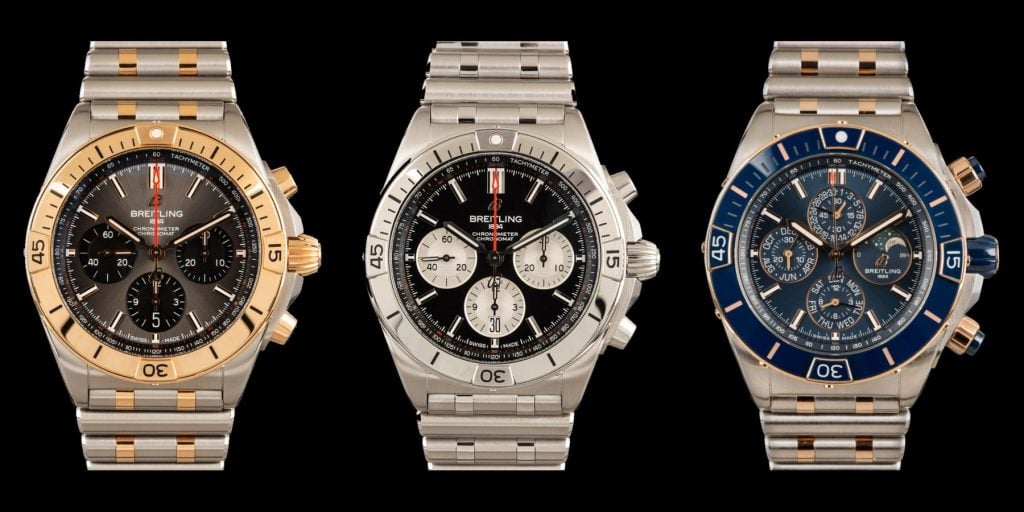
Current-Production Breitling Chronomat Key Features
- Year of Introduction: 2020 (with additional models and updates introduced since then)
- Case sizes: 32mm, 36mm, 42mm, 44mm (The 44mm size was introduced with the Super Chronomat models)
- Materials: Stainless Steel, 18k Red Gold, Two Tone (Stainless Steel & 18k Red Gold), Stainless Steel & Platinum, Titanium (added in newer releases)
- Configurations: Time + Date or Chronograph w/ Date
- Dial Colors: Black, White, Silver, Anthracite, Green, Blue, Ice Blue, Copper, Mother of Pearl, Beige, Mint Green, Pink, Anthracite (recently introduced)
- Luminous Material: Super-LumiNova
- Bezels: Fixed or Rotating w/ Elapsed Time Scale; “Rider Tabs” located at the poles
- Crystals: Cambered Sapphire w/ Anti-Glare Coating on Both Sides
- Movements: Breitling Caliber 77 (SuperQuartz), Breitling Caliber 10 (Self-Winding), Breitling Caliber 01 (Self-Winding)
- Water Resistance: 100 Meters (330 Feet) to 200 Meters (660 Feet) depending on the model
- Straps and Bracelets: Leather Strap w/ Deployant Buckle, Rubber Strap, or Metal "Rouleaux" Bracelet
- Retail Price Range: $3,900 USD to approximately $59,000 USD for the Super Chronomat Perpetual Calendar 140th Anniversary.
While the Breitling Chronomat has been a constant presence in the brand’s catalog since its relaunch in 1984, the collection received a major update in 2020 when Breitling released an all-new generation of its fan-favorite, multi-purpose sports watch. While the overall aesthetic of the current-production range significantly draws from a number of different famous Chronomat references from the brand’s archives, powering the new chronograph versions of the Breitling Chronomat is the brand’s in-house B01 movement, which brings this fan-favorite sports watch straight into the modern era.
Breitling Chronomat History
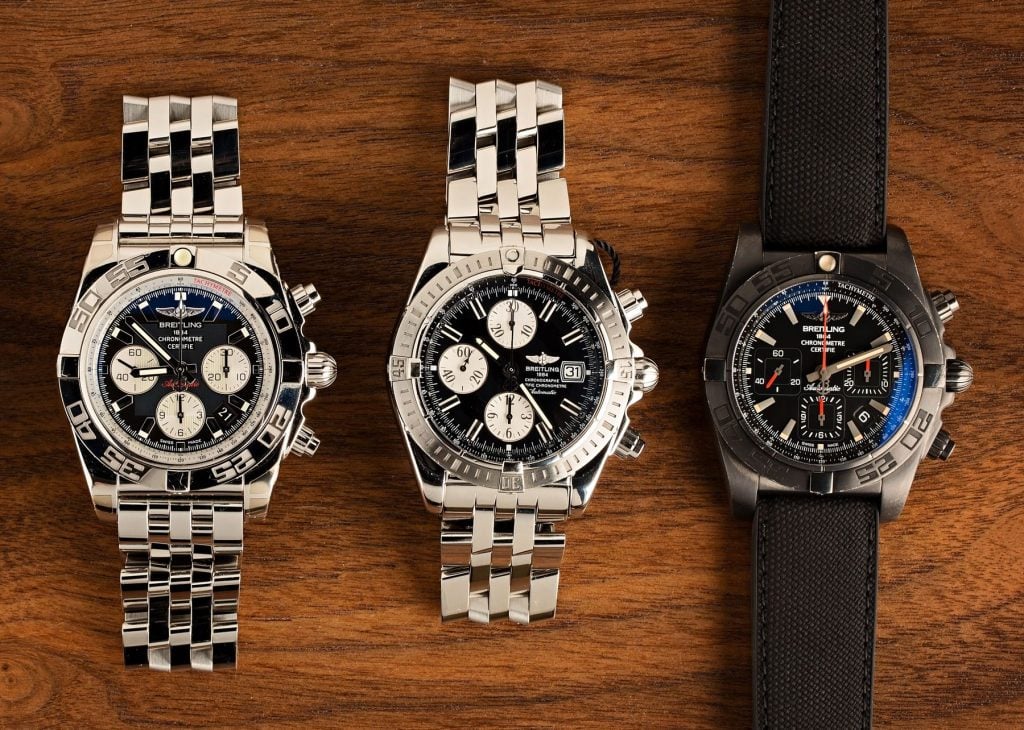
Breitling was established in 1884 by Léon Breitling in St. Imier, Switzerland, mainly focusing on building chronographs. By 1899, Breitling had even obtained a patent for a simplified chronograph pocket watch and by 1892, the workshop had expanded into a new factory in La Chaux-de-Fonds with 60 employees. The next decade was marked by great advances in chronographs and stopwatches, including timers with tachymeter scales to measure speeds and pulsometers for doctors to measure pulse rates.
Eventually, Willy Breitling (the founder's grandson) had taken over the company, continuing his grandfather's advances in chronographs and patenting the world’s first wrist chronograph with two pushers, which would ultimately lay the groundwork for the Chronomat in 1940. During this time Willy was also focusing much of the company’s efforts on creating watches for pilots and clocks for airplanes. Even the British Royal Air Force was a customer of Breitling during WWII and had some of its bombers and fighter jets outfitted with Breitling dashboard clocks.
The Chronomat was one of Breitling’s very first tool watches, but the watchmaker wanted to further distinguish this model from all the other pilot's watches of the time, so the brand marketed it towards the scientific community like engineers and mathematicians (hence its "Chronomat" name - a combination of the words "chronograph for mathematicians"). The original Breitling Chronomat watches featured slide rule bezels and were the first models from the brand to feature this unique characteristic that has since become the signature design element of the Navitimer collection.
Over the years, there have been many iterations of the Chronomat, from the first-ever automatic chronograph in the late 1960s to the quartz version during the infamous quartz crisis of the 1970s. For Breitling, like many other legacy watchmakers at the time, the quartz crisis was detrimental to business, forcing the company to go up for sale in 1979. However, the company was not lost and relaunched in 1980 - just without the Chronomat in its lineup. In fact, the watch wouldn’t be brought back until 1984, this time geared entirely towards pilots rather than scientists.
Despite the change, the Chronomat is now one of Breitling's most famous watches and easily one of its consistent best sellers. In 2004, Breitling even went on to update the line again, this time introducing the Chronomat Evolution in 2004 and in 2009, reinventing the watch with the Caliber B01, Breitling’s first entirely in-house movement.
Breitling Chronomat Dials

Today, there are two main types of dials on the Breitling Chronomat - the chronograph dial with three sub-dials situated at 3, 6, and 9 o'clock, and the simpler time-and-date dial that features baton indexes and a date window at the 6-o’clock location. The chronograph dial is exclusively found on Breitling's larger Chronomat watches, which all currently have 42mm cases.
Historically, the Breitling Chronomat was known for its complicated chronograph dials, the very first Breitling Chronomat from the 1940s featured two sub-dials at 3 and 9 o’clock. There’s also a very rare Chronomat from 1946 with an additional 12-hour sub-dial. However, this two register design would largely stick around through the 1950s as this watch continued to increase in popularity, eventually in the 1960s getting some small updates like an arrow marker at 12 o’clock. We also see the very first automatic Chronomat during this time, which gets a bolder dial - either a black dial with silvered/white sub-registers and outer scale or one with a white dial and an outer scale with black sub-registers and both versions also feature bright red accents.
But by the 1970s the dials drastically changed, this time totally omitting the chronograph subdials because the watch was actually no longer a chronograph. All three models produced during this time included the Chronomat slide-rule but no longer had a Chronograph function - the dials now featured slender hour markers and simplified faces. By the 1980s when the Chronomat was reinvented under Breitling’s new ownership, the chronograph subdials had returned but moved to the 6, 9, and 12 positions with the date window at 3-o’clock.
Color-wise, over the years the dials of the Chronomat have largely swung between blue, black, and white/cream. However, the Breitling Chronomat has also featured green and even super rare, yellow 'FOR AMERICA' dials. The current collection has a killer mint dial for the time-and-date models, in addition to more classic options such as black, white, silver, and blue.
Breitling Chronomat Case & Bezels
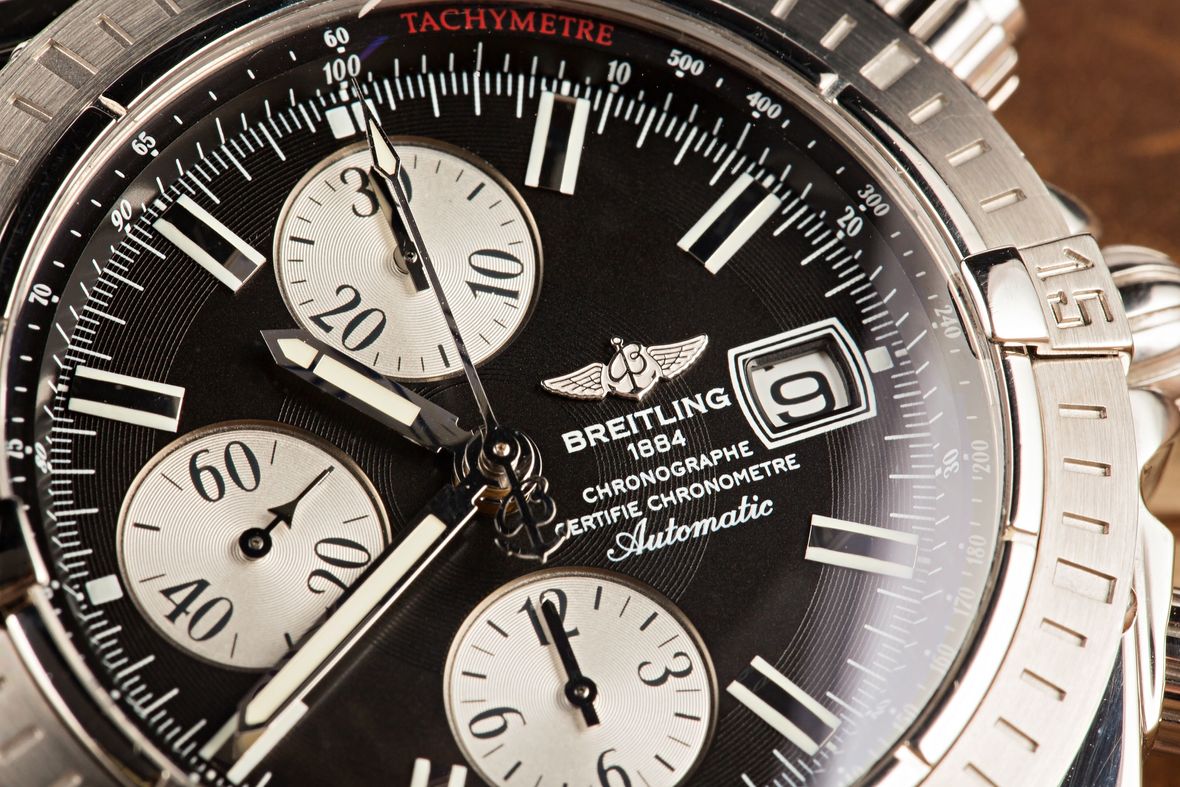
There are currently four case sizes in the contemporary Chronomat collection, 32mm, 36mm, 42mm, and 44mm. In the past, Chronomat case sizes have been as large as 49mm, like the very first 'big case' automatic Chronomat watches. More recently, the size of the Chronomat climbed to 47mm for the Limited Edition Jet Team GMT MB04108P/BD76. However, the original size of the Chronomat is a modest 36mm, which was quite standard for that time when most men’s watches usually hovered between 34mm and 36mm.
Traditionally, the case materials for the Breitling Chronomat have been stainless steel and gold, as well as two-tone stainless steel and gold. However, Breitling has updated the materials before, like with the GMT mentioned above, using a brushed-black stainless steel case for a contemporary and tactical feel. When it comes to bezels, the metal usually matches the case, unless it’s a two-tone, in which the bezel is always outfitted in gold.
As for the designs of the bezels, these have also changed over the years. When Breitling first began making this watch, the brand actually applied for a patent for its rotating bezel that featured an internal circular slide-rule scale incorporated beneath the crystal. The turning bezel of that time included an outer telemeter scale for measuring distance over time. What started out as a serrated bezel also turned into a beaded bezel (like we know and love on the Navimeter) for a short period. In the late 1960s with the ‘big case’ we also got a brand new, and patented, geared bezel mechanism with more of a serrated edge.
In the 1980s, the Chronomat was updated with a rotating timing bezel that was outfitted with four protruding "rider tabs" which allowed a pilot to easily grip the bezel while wearing gloves in the cockpit - this was one of the ways that Breitling was rebranding the model as a pilots watch rather than one intended for scientists. In the 2000s, the bezel was updated again with a different font for the numbers as well as wider 5-minute marks. Today, the bezels are unidirectional and feature 5 and 15-minute markers for the non-chronograph versions and the same for the chronograph, but with additional minute markers in the first and last 15-minute increments.
Breitling Chronomat Bracelets
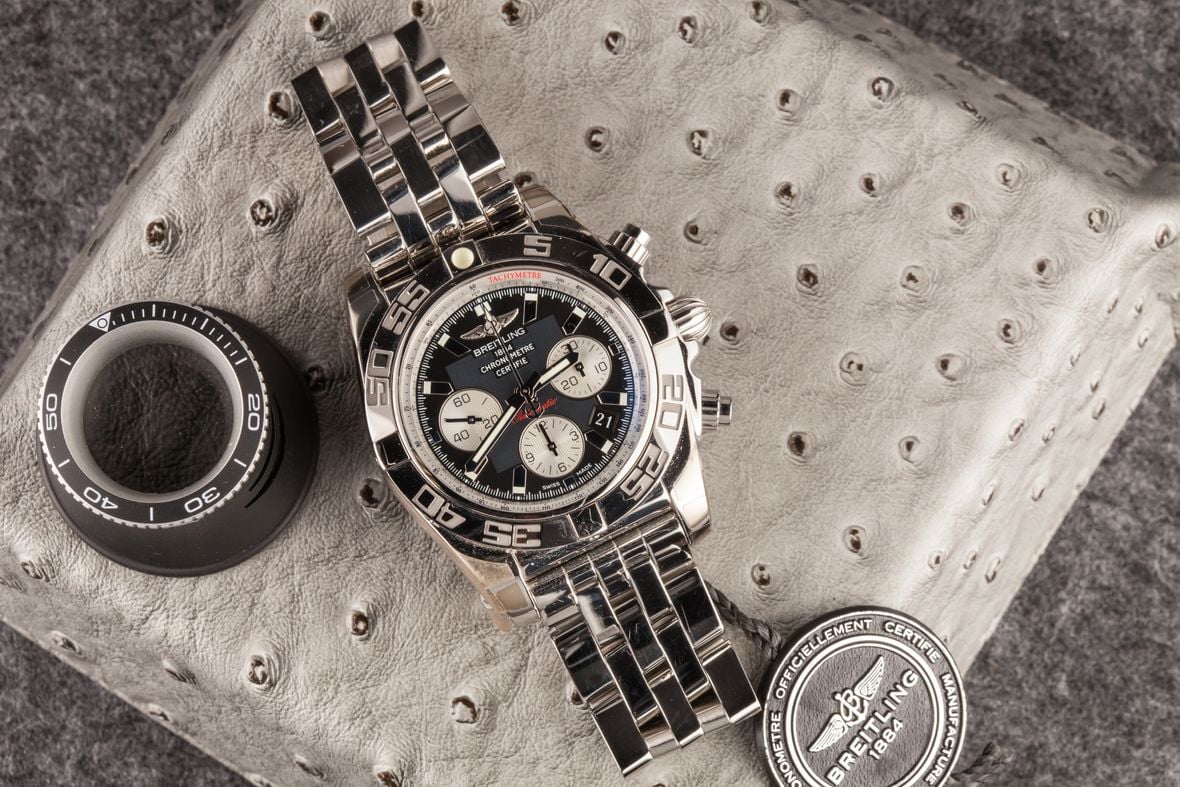
Today, the modern Chronomat bracelets feature an integrated appearance (although they are removable), which offers a seamless design from the case through the strap. These metal bracelets are available in stainless steel, two-tone, and solid gold to match the cases of their watches, and the current generation features the collection’s signature “Rouleaux” bracelet that is defined by its beautifully rounded links.
There are also a couple of models available with leather straps, which were the traditional bracelet of the Chronomat until the 1970s when the brand began producing quartz models with integrated bracelets to stay current with trends at the time. Starting with the Chronomat’s rebirth during the 1980s we continue to see metal bracelets from Breitling for the Chronomat, like the Rouleaux and Pilot link bracelets.
Breitling Chronomat Prices
Like most Swiss luxury watch brands, Breitling’s prices vary widely depending on the materials, size, and features/complications. However, the core price range of new Breitling Chronomat watches in stainless steel hovers around the $4,400 – $9,900 mark. As you may expect, gold Breitling watches have significantly higher retail prices, but they drop by about 25-30% on the secondary market, making them excellent value propositions.
Today at a retail level, you can get a 32mm Breitling Chronomat in stainless steel with a quartz movement for $4,450. The most expensive Chronomat clocks in at $59,000 for a Super Chronomat 44mm model created to celebrate Breitling’s 140th anniversary. Stainless steel Chronomat watches with mechanical chronograph movements are typically the most popular among collectors, and the majority of examples can be purchased for anywhere between $4,000 to $7,000 on the secondary market.
Breitling Chronomat Movements
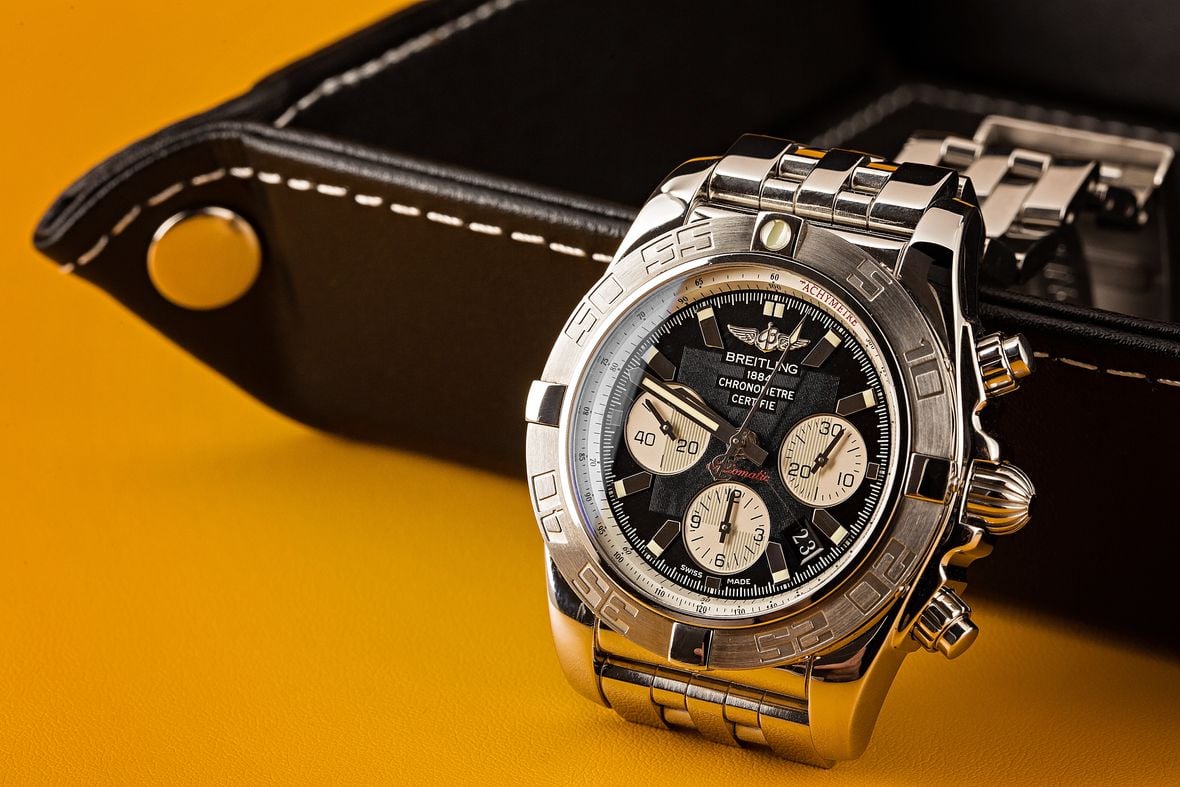
Over the years as Breitling updated and upgraded the Chronomat, the brand also outfitted the watch with a variety of different movements. Below, we've compiled a comprehensive list of nearly all the movements used by the Breitling Chronomat over the years.
- Venus 175: Used in the early Chronomat’s of the 1940s. Signed, 17-jewels with a center chronograph hand recording seconds, a minute chronograph register at 3-o'clock with recording capabilities up to 45 minutes, and a running seconds hand on the 9 o'clock subdial.
- Venus 178: Used in the very limited 3-register subdial models of the 1940s.
- Venus 184: Outfitted in the Chronomat Moon Phase, the top of the line Chronomat of the time. Powered a 3-register version including a moonphase and date complication.
- Venus 175: Used in the Chronomat ref. 769, ref. 808 and the ‘big case’ ref. 818.
- Valjoux 7733: Outfitted in the ref. 818’s of the late 1970s.
- Caliber 11/12: The first automatic 'big case' Chronomat was outfitted with a newly developed "Chrono-matic" microrotor movement named the Caliber 11 which was altered a bit after a year and renamed the Caliber 12. This movement was also used for the ref. 8808.
- Valjoux 7740: Chronomat ref. 7808 is outfitted with a manually wound movement in 1973.
- Quartz: During the quartz crisis, Breitling switched to quartz and ditched the chronograph for both the 'big case' 9108 and regular ref. 7808 with this movement.
- Valjoux 7750: This 17-jewel movement was used in the first ref. 81950s as well as modified for the Chronomat Moonphase ref. 81950 as well as with a yachting timer for the Chronomat Yachting ref. 81950.
- Breitling 13: This movement was used in the odd-sized 39.8 Breitling Chronomat Blackbird ref. A13350, which was introduced in 1993. Today, the Blackbird is now part of the 'Avenger' line.
- Breitling B01: The Chronomat finally receives a movement designed and built entirely in-house by Breitling.
Today, Breitling uses the Superquartz Caliber 77 for the 32mm watches, the automatic Caliber 10 for the 36mm models, and the automatic Caliber 01 for the 42mm, and all of these have the distinction of being in-house movements.
Breitling Chronomat Serial Numbers
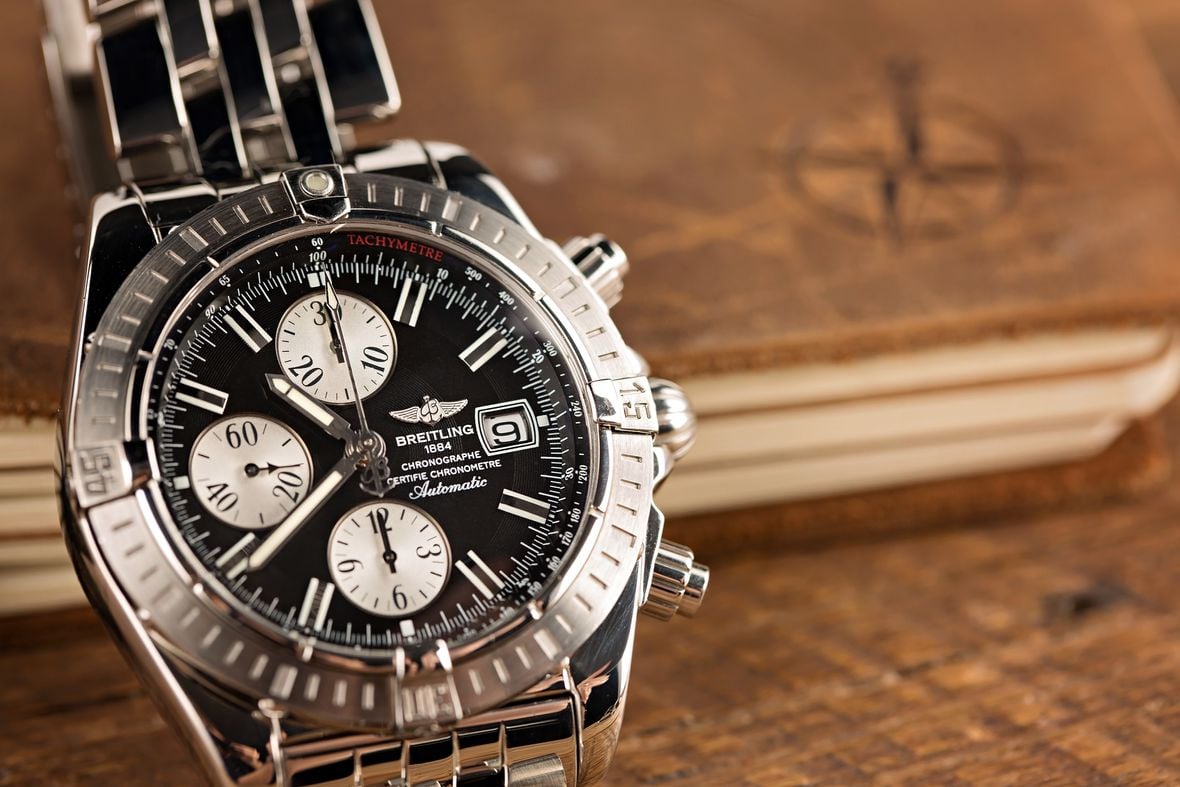
Below, we've listed the year and corresponding range of approximate vintage serial numbers used for chronograph watches by Breitling. If you have a Chronomat, you can determine the approximate year it was manufactured by the brand by finding the Breitling serial number range.
- 1944: 563659-568959
- 1945: 568971-636507
- 1946: 636508-692266
- 1947: 703562-717737
- 1948: 717784-728688
- 1949: 728724-740210
- 1950: 740405-769843
- 1951: 769844-808456
- 1952: 808457-817915
- 1953: 817916-832126
- 1954: 832127-844123
- 1955: 844124-868778
- 1956: 868779-889562
- 1957: 889563-898029
- 1958: 898830-910504
- 1959: 910505-922163
- 1960: 922164-933063
- 1961: 933064-947803
- 1962: 947804-963553
- 1963: 963554-975997
- 1964: 975998-1002734
- 1965: 1002735-1060398
- 1966: 1060399-1122809
- 1967: 1122810-1204581
- 1968: 1204582-1262904
- 1969: 1262905-1337825
- 1970: 1337826-1356899
- 1971: 1356900-1382203
- 1972: 1382204-1406566
- 1973: 1406567-1426969
- 1974: 1426970-1433372
- 1975: 1433373-1439417
- 1976: 1439418-1442922
- 1977: 1442923-1448464
- 1978: 1448465-1448473
Breitling Chronomat Frequently Asked Questions
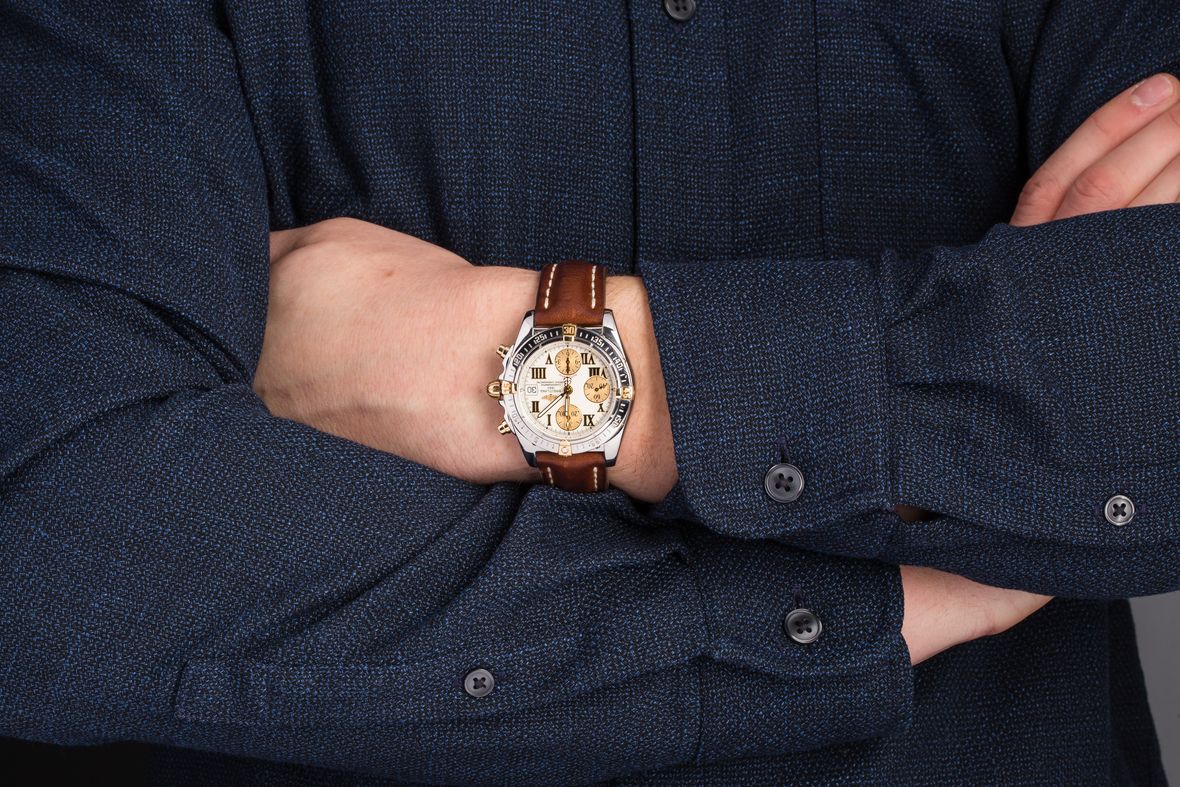
Below are a few of the most common questions about the Breitling Chronomat watch.
What is the Breitling Chronomat?
The Breitling Chronomat is a chronograph wristwatch that was first produced in 1940 and then revived by the brand in 1984. The Chronomat used to be a watch designed for scientists and mathematicians but was rebranded as a pilot’s watch, and now an everyday sports watch. The Breitling Chronomat released in 2009 was the first watch to be entirely produced by Breitling and features the in-house Caliber B01 movement.
Is the Breitling Chronomat a good watch?
The Breitling Chronomat is an excellent watch featuring top-notch movements and expertly executed finishing. With a history that dates all the way back to the 1940s, there are many great vintage examples of this watch as well as modern versions, and all of them offer their own unique style and aesthetic differences.
How much is a Breitling Chronomat?
On the retail market, a Breitling Chronomat will cost you between $4,450 and $59,000. On the secondary market you can find Chronomat’s for great prices – usually ranging from $4k to $7k for stainless steel models, and increasing from there for precious metal editions and rare or collectible vintage references.
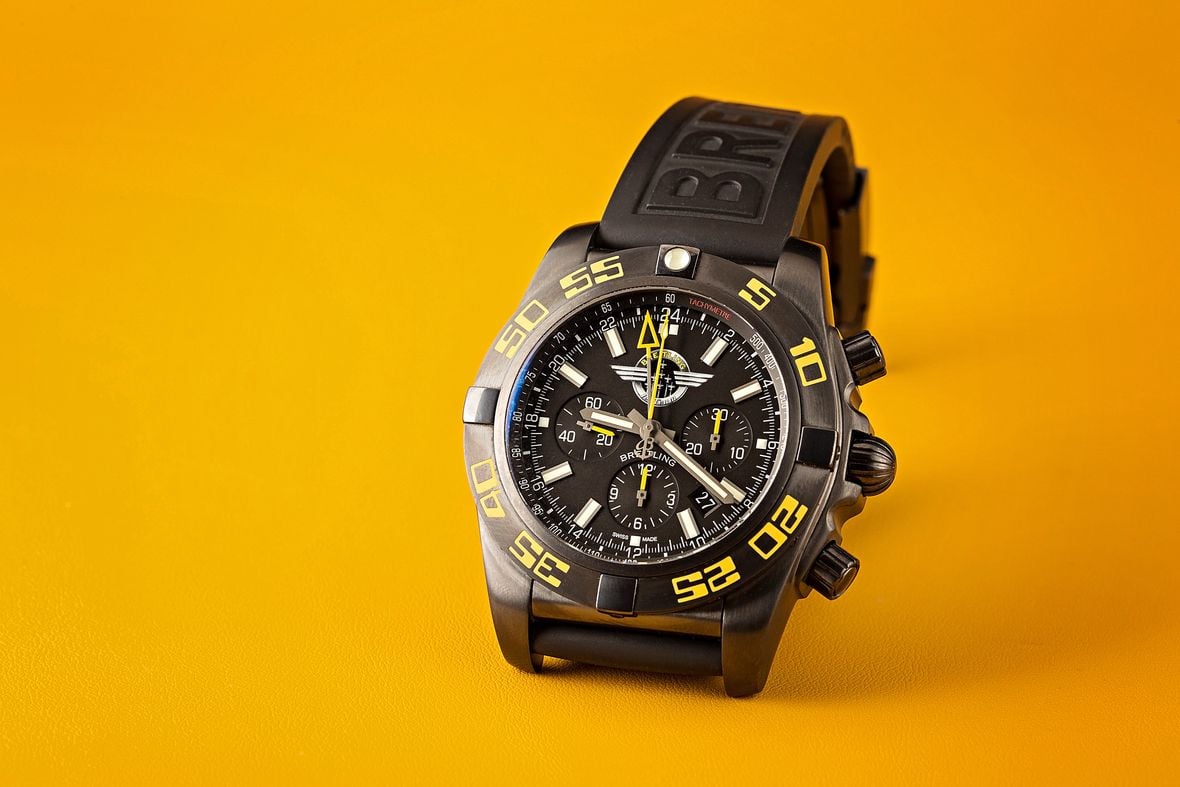
With over two decades of experience in the luxury watch industry, the Bob's Watches Editorial Team stands at the forefront of watch expertise and insight. Our team, composed of seasoned watch enthusiasts, skilled horologists, and knowledgeable industry insiders, is dedicated to bringing you the latest and most accurate information in the world of luxury timepieces. We pride ourselves on our meticulous attention to detail and our unwavering commitment to authenticity. Our editorial content is a reflection of our passion for luxury watches and our dedication to providing our readers with comprehensive, unbiased, and up-to-date information. Our expertise spans a wide range of topics, including in-depth reviews of the latest models, historical retrospectives of iconic timepieces, and insightful analyses of market trends. We are also renowned for our detailed guides on watch maintenance and investment advice, making us a trusted resource for both seasoned collectors and new enthusiasts alike. As thought leaders in the watch industry, we understand the importance of staying ahead of the curve. That's why we continually update our knowledge and skills, ensuring that our readers receive the most current and relevant information. Whether you're seeking advice on your next luxury watch purchase or looking to deepen your understanding of watch craftsmanship, the Bob's Watches Editorial Team is here to guide you.